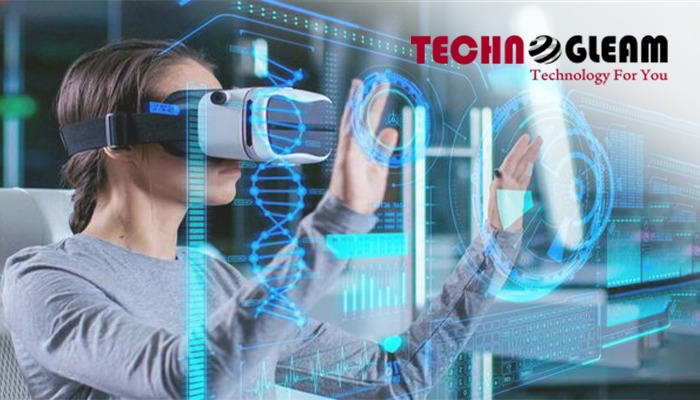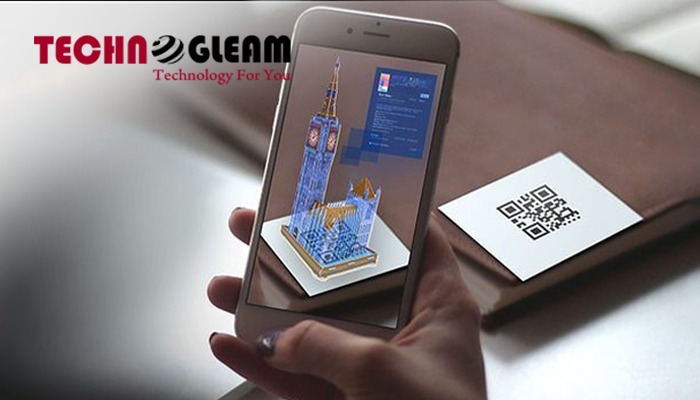AR Marketing: Transforming Engagement with Augmented Reality
Augmented Reality (AR), a departure from its immersive counterpart Virtual Reality, brings a novel dimension to our surroundings by seamlessly integrating digital elements into the real world. Picture using your smartphone to witness furniture materialising in your living room or dinosaurs playfully roaming your backyard – this is the captivating enchantment that AR offers. Accessible through devices like smartphones or specialised glasses, AR’s interactive overlay presents an array of possibilities, allowing brands to forge deeper, more engaging connections with consumers.
AR: The Marketing Maverick:-
- Interactive Product Visualisation:- AR transcends traditional catalogue displays for furniture retailers. Apps powered by AR grant potential buyers the ability to visualise how couches, tables, and lamps would seamlessly fit into their living spaces. This interactive experience not only instills confidence but also reduces purchase hesitation, ultimately leading to a substantial boost in sales.
- Brand Storytelling Reinvented:- AR empowers brands to weave captivating narratives that immerse consumers in unique journeys. Picture an AR-powered scavenger hunt within a store, unlocking brand stories and prizes as customers progress. These interactive experiences forge memorable connections, fostering brand loyalty and advocacy as consumers actively participate in the brand’s narrative.
- Retail Reimagined:- Mundane shopping experiences undergo a transformative shift into thrilling adventures with AR. Imagine trying on outfits without changing, courtesy of AR-powered virtual mirrors in clothing stores. Additionally, users can scan products with their phones to access additional information, reviews, or personalised recommendations. These features elevate the shopping experience, driving engagement and ultimately leading to increased conversions.
- Immersive Marketing Campaigns:- AR redefines marketing campaigns by replacing static ads with interactive experiences that go viral on social media. Envision AR filters enabling users to virtually try on makeup or transport themselves to exotic locations. Shared and experienced by users, these interactive ads organically increase brand exposure and foster community engagement.
- Gamification: Turning Engagement into Play:- AR-powered games and challenges spark user participation. Consider a car brand launching an AR treasure hunt where users scan real-world locations to unlock car features and win prizes. Such gamified experiences entertain, educate, build brand affinity, and generate valuable data on user preferences, creating a dynamic and engaging connection between the brand and its audience.
- Educational & Instructional Content:- AR transforms complex information into easily digestible experiences. Think of interactive manuals using AR to guide users through product assembly or maintenance procedures. An exemplary application includes medical students exploring the human anatomy in 3D through AR overlays, showcasing the potential of AR not only in education but also in enhancing retention and engagement in various fields.

As brands explore the dynamic potential of AR, the possibilities continue to expand, shaping a future where consumer engagement is not just transactional but an immersive and interactive experience, creating lasting connections between brands and their audiences.
Mastering the AR Art:–
Implementing Augmented Reality (AR) effectively demands a well-crafted strategy and meticulous execution. Here’s a detailed roadmap to guide you towards success:
- Define Your Objectives:-Before embarking on your AR journey, clearly define your objectives. Whether your goal is to increase brand awareness, drive sales, educate, or entertain, aligning your AR experience with specific objectives ensures that your efforts have maximum impact. This initial step sets the foundation for a focused and purposeful AR campaign.
- Choose the Right Technology:-Recognize that not all AR technologies are created equal. Select the technology that best aligns with your campaign goals. Marker-based AR, which relies on specific triggers, or location-based AR using GPS for activation are two common options. Understanding these nuances is crucial for ensuring a seamless and user-friendly experience, catering to the preferences of your target audience.
- Compelling Content is King:- The success of your AR campaign hinges on the quality of its content. Focus on delivering value, entertainment, or utility through the AR experience. Craft content that is not only engaging but also interactive and relevant to your target audience. Consider the unique features of AR to create an immersive and memorable experience that resonates with your users.
- Test and Refine:- Prior to launching your AR campaign, conduct thorough testing. Gather feedback from a diverse group of users, refine the AR experience based on their insights, and iterate accordingly. This iterative process ensures that your AR application is fine-tuned and provides a seamless, bug-free experience. Testing and refinement are crucial for leaving a positive and lasting impression on your audience.
- Measure and Adapt:- Launching your AR campaign is just the first step in a continuous process of improvement. Track key performance indicators (KPIs) such as engagement metrics, conversions, and brand sentiment. Use the data obtained from these measurements to refine your strategy and optimise the AR experience over time. This ongoing assessment allows you to adapt to changing user preferences and market dynamics, ensuring the long-term success of your AR initiatives.
- The Future Beckons:- As AR technology continues to advance and user adoption expands, its potential in marketing reaches new heights. Envision a future where AI-powered AR agents personalize shopping experiences or AR-enabled product tutorials are streamed live from factories. The possibilities are indeed limitless, offering a tantalising glimpse into a marketing landscape where AR seamlessly integrates with our daily lives, creating unique and personalize interactions between brands and consumers. The key lies in staying innovative, adaptive, and attuned to the evolving possibilities that AR technology brings to the forefront of strategic marketing.

The future of marketing is intricately linked with the evolution of Augmented Reality. By embracing AR, businesses can transcend conventional marketing approaches, stand out in a competitive landscape, and build meaningful connections with consumers. The transformative potential of AR is a beacon guiding marketers towards a future where strategic engagement is redefined, and immersive experiences become the norm rather than the exception. It’s time to embrace AR and embark on a journey that unlocks unprecedented dimensions of creativity and success in marketing.

Recent Comments